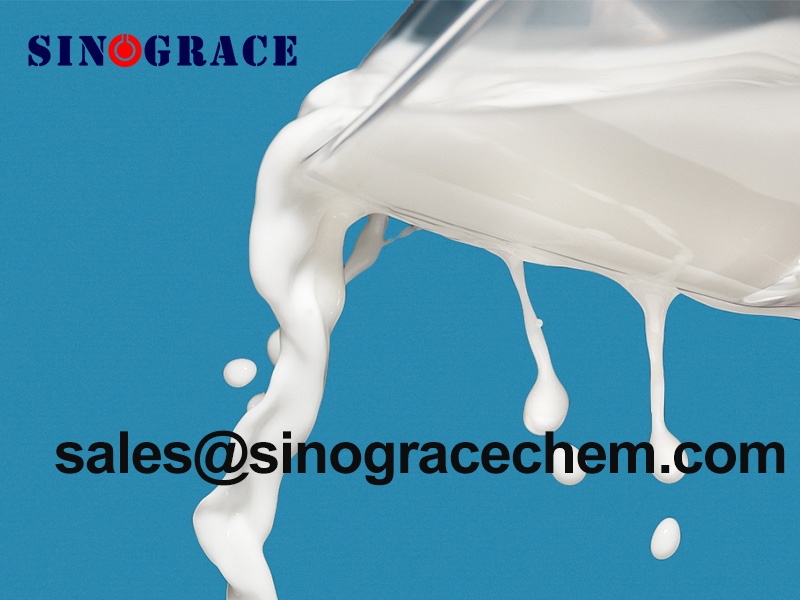01 Emulsión acrílica
La emulsión acrílica es un líquido viscoso de color blanco lechoso o casi transparente. Es un tipo de emulsión copolimerizada con monómero acrílico puro. Es una emulsión de pequeño tamaño de partícula, polivalente y de excelente rendimiento.
02 Características
â–³ Excelente brillo y transparencia
â–³ resistencia al agua y a la intemperie
➢ Resistencia alcalina y resistencia a la contaminación.
â–³ buena adherencia
â–³ no tóxico, no irritante, inofensivo para el cuerpo humano, baja contaminación, de acuerdo con los requisitos de protección ambiental
03 Aplicación
â–³ Adecuado para una variedad de formulaciones de recubrimiento, utilizado principalmente para la construcción de adhesivos impermeables, pegamento de caseína, tinta a base de agua, pegamento para madera contrachapada, etc.
➢ Resaltadores y recubrimientos semibrillantes
➢ Superficies de mampostería, madera y acero
➢ Para la preparación de pinturas látex planas, semibrillantes y de alto brillo, pero también para la preparación de pisos de alta calidad, baldosas de color cemento y canchas de tenis para revestimientos de acabado.
04 Categorías
Según el uso del producto, la emulsión se puede dividir en: emulsión de pared interior, emulsión de pared exterior, emulsión de pintura de piedra real, emulsión elástica, emulsión de pintura de granito líquido, emulsión impermeable, emulsión de sellado, etc.
Según la composición del producto se puede dividir en: emulsión acrílica pura, emulsión acrílica de silicona, emulsión acrílica de estireno, emulsión acrílica de vinagre, etc.
05 Composición del recubrimiento de emulsión
1. Emulsión de resina sintética:Es el material base del recubrimiento, es una de las principales sustancias formadoras de película del recubrimiento de emulsión y desempeña el papel de adhesivo en el recubrimiento.
Recubrimiento de emulsión de acrilato según composición del polímero: emulsión de copolímero de estireno-acrilato, emulsión de copolímero de acrilato-carbonato de vinilo terciario, emulsión de copolímero de silicona-acrilato, emulsión de copolímero de acrilato total.
Según las características de la película:Emulsión termoplástica. Emulsión termoendurecible, emulsión elástica, etc.
Según las propiedades de carga de las partículas:emulsión aniónica, emulsión catiónica, emulsión no iónica.
Dividido por uso:emulsión interna, emulsión externa, emulsión especial.
2. Pigmento y relleno:Es una de las principales sustancias formadoras de película del recubrimiento en emulsión.
3. Aditivos:Dispersante humectante de pigmentos, regulador de ph, antiespumante, modificador reológico, agente espesante, conservante bactericida, agente formador de película, agente anti-moho y anti-algas, agente anticongelante, agente tixotrópico, absorbente ultravioleta, etc.
4. Agua:En la producción industrial, el polímero de emulsión debe utilizar agua destilada o agua desionizada, el contenido de cloruro de sodio debe ser inferior a 0,05 mg/L y el valor de conductividad del agua debe controlarse por debajo de 10 mS.
☆ Monómero:Clase C pura: ácido acrílico, acrilato de metilo, acrilato de etilo, metacrilato de metilo, metacrilato de butilo, etc.
Copolímero:acetato de vinilo, estireno, acrilonitrilo, maleato de dibutilo, butadieno, etc.
Monómeros funcionales:ácido metacrílico, ácido maleico, ácido fumárico, metilacrilamida, etc.
Monómeros reticulados:hidroximetil acrilamida, metacrilato de hidroxietilo, metacrilato de hidroxipropilo, divinilbenceno, etc.
☆ Iniciador:Según el sistema de reacción: iniciador soluble en agua, iniciador soluble en aceite. Según el sistema de generación de radicales libres: tipo de descomposición térmica, prototipo de oxidación-reducción.
☆ Emulsionante:aniónico, catiónico, no iónico, anfotérico
☆ Neutralizador:Resina aniónica base agua: neutralizador alcalino, amoniaco, aminas.
Resina catiónica base agua: neutralizador de ácidos orgánicos, ácido fórmico, ácido acético, ácido láctico, etc.
☆ Co-disolvente:principalmente alcoholes, etanol, alcohol isopropílico, n-butanol, terc-butanol, etc.
SinograceProducción química utilizada enpegamento a base de agua,tinta a base de agua, construcción de emulsión interior y exterior y otros campos deemulsión acrílica a base de agua, bienvenido a consultar.


 español
español English
English français
français русский
русский العربية
العربية





